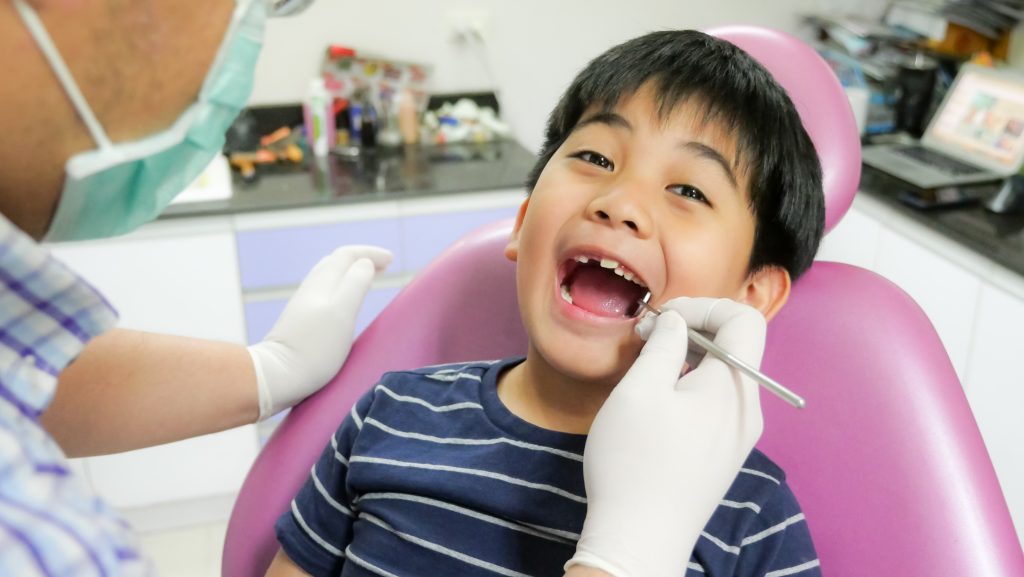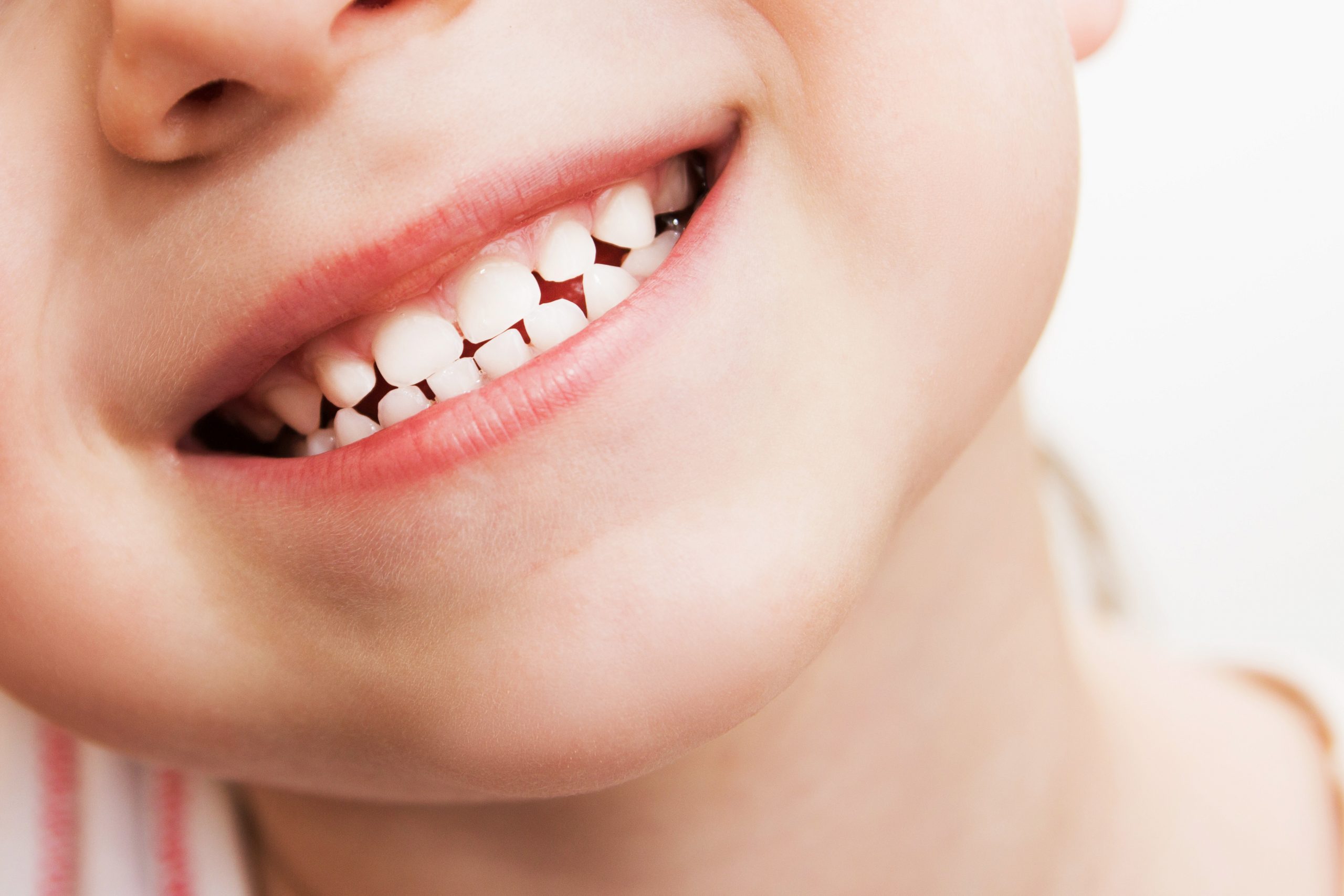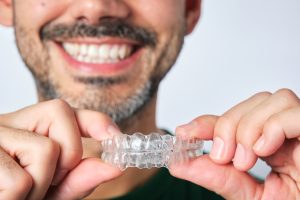Deciduous teeth, or “baby” teeth, are the first teeth that come out when we’re babies. They are often called “milk teeth” because they fall out when children are between six and twelve years old. Permanent teeth grow in later to replace them. These permanent teeth will usually last a lifetime, with some people even having all their original teeth for the rest of their lives. Learn more about deciduous teeth, how to take care of them, how they’re different from permanent teeth, and more, in this article.
What are deciduous teeth?
Deciduous teeth, also known as baby teeth or primary teeth, are the first set of teeth that erupt in an infant’s mouth. There are 20 deciduous teeth: 10 in the upper jaw and 10 in the lower jaw. These teeth usually begin to appear around 6 months of age and are all present by age 3.
The word “deciduous” comes from the Latin word for “falling off” because these teeth eventually fall out and are replaced by permanent teeth. The process of losing baby teeth and getting permanent teeth is called exfoliation.
Deciduous teeth have a thinner layer of enamel than permanent teeth. They are also smaller and have shorter roots. The shape of deciduous molars (back teeth) is different from that of permanent molars because they have only two cusps (points) instead of three.
While baby teeth eventually fall out, they play an important role in development. They help with chewing, speech, and maintaining space for the permanent teeth that will come in later.
How are deciduous teeth different from permanent teeth?
When children are born, they have a set of 20 teeth known as deciduous, or primary, teeth. These teeth eventually fall out and are replaced by 32 permanent teeth. The deciduous teeth are smaller than the permanent teeth and have different shapes. For instance, the incisors (front teeth) are narrower and sharper in deciduous teeth, while the molars (back teeth) have a more rounded shape.
The roots of deciduous teeth are also shorter and not as firmly anchored in the jawbone as permanent teeth. As a result, they are more likely to become loose and fall out on their own. However, some children may need help from their dentist to remove their deciduous teeth.
Permanent teeth are larger than deciduous teeth and have longer roots that are more securely anchored in the jawbone. They also have a more polished surface due to wear and tear over time.
At what age do baby teeth start to fall out?
Deciduous teeth start to fall out around the age of six. This is when the permanent teeth start to come in and push the baby teeth out. By the time a child is 12 years old, all of their deciduous teeth should have fallen out.
Tips for caring for baby teeth
Caring for baby teeth is important for maintaining oral health and preventing cavities. Here are some tips for caring for your child’s teeth:
- Brush your child’s teeth at least twice a day with a pea-sized amount of toothpaste.
- Floss your child’s teeth daily.
- Visit the dentist regularly for checkups and cleanings.
- Encourage your child to eat healthy foods and limit sugary snacks and drinks.
By following these simple tips, you can help keep your child’s teeth healthy and prevent cavities.

Does caring for primary teeth poorly affect permanent teeth?
Caries (tooth decay) in the primary teeth can lead to problems with the permanent teeth. If the cavities are not filled, the bacteria can continue to infect the mouth. This can lead to more cavities in the permanent teeth. The infection can also spread to the gum tissue and bone, which can cause periodontal disease.
More significantly, caring for baby teeth builds good oral hygiene habits in children. If these habits are not set early in life, chances are that when the child becomes an adult, their oral hygiene routine isn’t going to be ideal. On the other hand, teaching children to care for their teeth, no matter their stage in life, is a lesson that will serve them well throughout their lives.
At what age can a child start using invisible braces?
The American Academy of Orthodontics (AAO) recommends that children be seen by an orthodontist around age 7. At this age, most children have a mix of baby teeth and adult teeth, which can make it difficult to assess any potential problems. However, an orthodontist will be able to spot any early signs of crowded teeth or an improper bite. This should prepare the child for being fitted for invisible braces when all their permanent teeth finally come in, usually around the age of 13 or 14.
Invisible braces, sometimes referred to as clear aligners, are a popular treatment option for both adults and children. They are virtually invisible, so they are cosmetically appealing. They are also removable, so they do not require the same level of commitment as traditional braces.
If your child is interested in invisible braces, the first step is to consult with an orthodontist. The orthodontist will perform a thorough examination and develop a treatment plan specifically for your child. If aligners are deemed appropriate, your child will need to wear them for 20-22 hours per day in order to achieve the best results.
Why ALINA Invisible Braces should be your child’s first choice for a beautiful smile
ALINA invisible braces are an innovative, non-invasive, and non-disruptive option for anyone seeking to treat any misalignment issues–both for teeth and jaws. That’s because our aligner trays feature:
- Better materials – ALINA crafts every tray of invisible braces with space-age materials approved by the US FDA, so you know that they’re safe and reliable.
- Better technology – Our AlinaSmile technology uses Ai to determine your most beautiful smile based on the position, not just of your teeth, but of all your facial features.
- Better results – With more than 25 years of expertise in revealing beautiful smiles, ALINA has uncovered thousands of smiles throughout the US, Canada, and the UK.
Treat misalignment issues with the best option on the market and book a consult today.






